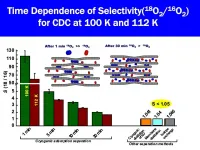(Press-News.org) Viruses are the most numerous biological entities on the planet. Now researchers at the Wellcome Sanger Institute and EMBL's European Bioinformatics Institute (EMBL-EBI) have identified over 140,000 viral species living in the human gut, more than half of which have never been seen before.
The paper, published today (18 February 2021) in Cell, contains an analysis of over 28,000 gut microbiome samples collected in different parts of the world. The number and diversity of the viruses the researchers found was surprisingly high, and the data opens up new research avenues for understanding how viruses living in the gut affect human health.
The human gut is an incredibly biodiverse environment. In addition to bacteria, hundreds of thousands of viruses called bacteriophages, which can infect bacteria, also live there.
It is known that imbalances in our gut microbiome can contribute to diseases and complex conditions such as Inflammatory Bowel Disease, allergies and obesity. But relatively little is known about the role our gut bacteria, and the bacteriophages that infect them, play in human health and disease.
Using a DNA-sequencing method called metagenomics*, researchers at the Wellcome Sanger Institute and EMBL's European Bioinformatics Institute (EMBL-EBI) explored and catalogued the biodiversity of the viral species found in 28,060 public human gut metagenomes and 2,898 bacterial isolate genomes cultured from the human gut.
The analysis identified over 140,000 viral species living in the human gut, more than half of which have never been seen before.
Dr Alexandre Almeida, Postdoctoral Fellow at EMBL-EBI and the Wellcome Sanger Institute, said: "It's important to remember that not all viruses are harmful, but represent an integral component of the gut ecosystem. For one thing, most of the viruses we found have DNA as their genetic material, which is different from the pathogens most people know, such as SARS-CoV-2 or Zika, which are RNA viruses. Secondly, these samples came mainly from healthy individuals who didn't share any specific diseases. It's fascinating to see how many unknown species live in our gut, and to try and unravel the link between them and human health."
Among the tens of thousands of viruses discovered, a new highly prevalent clade - a group of viruses believed to have a common ancestor - was identified, which the authors refer to as the Gubaphage. This was found to be the second most prevalent virus clade in the human gut, after the crAssphage, which was discovered in 2014.
Both of these viruses seem to infect similar types of human gut bacteria, but without further research it is difficult to know the exact functions of the newly discovered Gubaphage.
Dr Luis F. Camarillo-Guerrero, first author of the study from the Wellcome Sanger Institute, said: "An important aspect of our work was to ensure that the reconstructed viral genomes were of the highest quality. A stringent quality control pipeline coupled with a machine learning approach enabled us to mitigate contamination and obtain highly complete viral genomes. High-quality viral genomes pave the way to better understand what role viruses play in our gut microbiome, including the discovery of new treatments such as antimicrobials from bacteriophage origin."
The results of the study form the basis of the Gut Phage Database (GPD), a highly curated database containing 142,809 non-redundant phage genomes that will be an invaluable resource for those studying bacteriophages and the role they play on regulating the health of both our gut bacteria and ourselves.
Dr Trevor Lawley, senior author of the study from the Wellcome Sanger Institute, said: "Bacteriophage research is currently experiencing a renaissance. This high-quality, large-scale catalogue of human gut viruses comes at the right time to serve as a blueprint to guide ecological and evolutionary analysis in future virome studies."
INFORMATION:
Contact details:
Dr Matthew Midgley
Press Office
Wellcome Sanger Institute
Cambridge, CB10 1SA
Phone: 01223 494856
Email: press.office@sanger.ac.uk
Notes to Editors:
* Metagenomics is the study of a collection of genetic material (genomes) from a mixed community of organisms. Metagenomics usually refers to the study of microbial communities. The NIH National Human Genome Research Institute has more information here: https://www.genome.gov/genetics-glossary/Metagenomics
Publication:
Camarillo-Guerrero, L.F., et al. (2021). Massive expansion of human gut bacteriophage diversity. Cell. DOI: https://doi.org/10.1016/j.cell.2021.01.029
Funding:
This work was supported by Wellcome and EMBL.
Selected websites:
European Bioinformatics Institute (EMBL-EBI)
The European Bioinformatics Institute (EMBL-EBI) is a global leader in the storage, analysis and dissemination of large biological datasets. We help scientists realise the potential of big data by enhancing their ability to exploit complex information to make discoveries that benefit humankind.
We are at the forefront of computational biology research, with work spanning sequence analysis methods, multi-dimensional statistical analysis and data-driven biological discovery, from plant biology to mammalian development and disease.
We are part of EMBL and are located on the Wellcome Genome Campus, one of the world's largest concentrations of scientific and technical expertise in genomics.
Website: http://www.ebi.ac.uk
The Wellcome Sanger Institute
The Wellcome Sanger Institute is a world leading genomics research centre. We undertake large-scale research that forms the foundations of knowledge in biology and medicine. We are open and collaborative; our data, results, tools and technologies are shared across the globe to advance science. Our ambition is vast - we take on projects that are not possible anywhere else. We use the power of genome sequencing to understand and harness the information in DNA. Funded by Wellcome, we have the freedom and support to push the boundaries of genomics. Our findings are used to improve health and to understand life on Earth. Find out more at http://www.sanger.ac.uk or follow us on Twitter, Facebook, LinkedIn and on our Blog.
About Wellcome
Wellcome exists to improve health by helping great ideas to thrive. We support researchers, we take on big health challenges, we campaign for better science, and we help everyone get involved with science and health research. We are a politically and financially independent foundation. https://wellcome.org/
The incidence of surgical site infections after an operation is an important quality indicator for hospitals. An overview from six European countries published in 2017 documented increased costs and, in some cases, significantly poorer surgical outcomes due to SSIs. The European Center for Disease Control (ECDC) and authorities in the U.S. have therefore defined criteria for recording and documenting the rate of surgical site infections per procedure. Swissnoso has issued binding guidelines for Switzerland based on these criteria. The study investigated to what extent surgical site ...
Positron Emission Tomography (PET) plays a major role in the early detection of various types of cancer. A research group led by Specially Appointed Professor Katsumi Kaneko of the Research Initiative for Supra-Materials (RISM), Shinshu University have discovered a method to separate oxygen-18 from oxygen-16, an essential isotope for PET diagnosis, at high speed and high efficiency. The results of this research were recently published online in the journal Nature Communications.
The novel method for the rapid and efficient separation of O-18 from O2-16, which ...
Covid-19 has not made people any less concerned about climate change - despite the pandemic disrupting and dominating many aspects of their lives, a study suggests.
Over a period of 14 months - including the first three months of the Covid-19 lockdown - neither concern about climate change nor belief in the severity of the problem declined in the UK, the research found.
Researchers compared responses to the pandemic with the financial crisis of 2008 to better understand how worries and priorities can change in a crisis.
In contrast to the economic collapse of 2008, which led to reduced concern with environmental issues, the pandemic has not decreased people's belief in the severity of climate change.
The findings shed light on how a concept called the finite pool ...
A team of researchers has devised a method using smartphones in order to measure food consumption--an approach that also offers new ways to predict physical well-being.
"We've harnessed the expanding presence of mobile and smartphones around the globe to measure food consumption over time with precision and with the potential to capture seasonal shifts in diet and food consumption patterns," explains Andrew Reid Bell, an assistant professor in New York University's Department of Environmental Studies and an author of the paper, which appears in the journal Environmental Research Letters.
Food consumption ...
Menopause is associated with several physiological changes, including loss of skeletal muscle mass. However, the mechanisms underlying muscle wasting are not clear. A new study conducted in collaboration between the universities of Minnesota (USA) and Jyväskylä (Finland) reveals that estrogen deficiency alters the microRNA signalling in skeletal muscle, which may activate signalling cascades leading to loss of muscle mass.
Menopause leads to an estrogen deficiency that is associated with decreases in skeletal muscle mass and strength. This is likely due to changes in both muscle function and the size of muscle cells commonly referred to as fibers.
"The mechanistic role of estrogen in the loss of muscle mass had not been established. In our study, we focused on signaling cascades ...
PHILADELPHIA--A significant number of non-Hodgkin lymphoma (NHL) patients in a Penn Medicine-initiated clinical trial continue to be in remission five years after receiving the chimeric antigen receptor (CAR) T cell therapy Kymriah™, researchers in Penn's Abramson Cancer Center reported today in the END ...
Tsukuba, Japan - Scientists at the University of Tsukuba demonstrated the possibility of electrons moving as if they were massless when certain materials called "topological insulators" are irradiated with laser beams. This work may lead to a new class of highly efficient electronic devices and photonic crystals.
Conventional electronic devices rely primarily on silicon crystals. From the point of view of electrons that make up the electrical signals coursing through these materials, the systems are so big as to be practically endless. This causes most of the electronic structures ...
A unique brain protein measured in the blood could be used to diagnose Alzheimer's disease decades before symptoms develop, according to new Edith Cowan University (ECU) research.
Published in Nature journal Translational Psychiatry, the study is the first to find that people with elevated glial fibrillary acidic protein (GFAP) in the blood also have increased amyloid beta in the brain, a known indicator of Alzheimer's disease.
GFAP is a protein normally found in the brain, but it is released into the blood when the brain is damaged by early Alzheimer's disease.
Alzheimer's disease affects more than 340,000 Australians and more than 35 million people in the world. Current ...
Scientists at EMBL Heidelberg and at the Zentrum für Infektiologie at Heidelberg University Hospital have succeeded for the first time in imaging HIV during transport into the nucleus of an infected cell. The electron tomographic images show the protein envelope of the virus passing through one of the nuclear pores - the openings in the membrane around the nucleus that allow molecules in and out. The scientists found that the virus passes through the nuclear pore intact, only breaking apart inside the nucleus, where it releases its genetic information. This clarifies an important mechanism by which the virus's genetic material is integrated into the genome of the infected cell.
The human immunodeficiency virus type 1 (HIV-1) - which was ...
A highly porous metal organic framework, assembled from molecular building blocks designed to lock together in a specific orientation, has been developed by researchers at KAUST.
Metal organic frameworks (MOFs) are crystalline materials made from metal ions connected by organic linkers. Their internal structure is like a repeating array of tiny identical cages, which are ideal for hosting various molecules. MOFs have found potential uses from gas sensing to molecular separations to storage, depending on the dimensions and structure of their pores.
One family of MOFs has been inspired by inorganic porous materials called zeolites. Zeolites are a special class of porous material with ...


